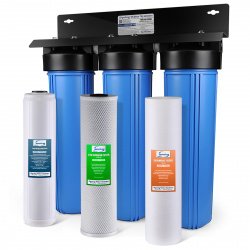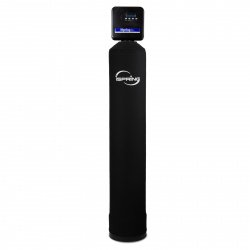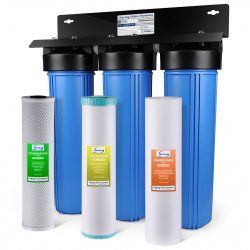
Unfortunately, it's quite common to find lead in your drinking water due to lead found in your faucets, pipes, and fixtures that assist in delivering your water to your home. Lead pipes were the primary source for transporting water within cities until it was finally recognized as a hazard to people's health.
While these types of pipes have been banned since 1986, already installed lines have not all been changed. This means that even if your home doesn't have any lead pipes, the lines running to your home from the city still might, meaning you could potentially be exposed to lead in your drinking water.
In this article, you will find out how to find out if you have lead in your water, how to get your water tested to see how safe it is, and the options you have to ensure that your water becomes lead-free.
How Do I Know If I Have Lead In My Water?
It might be challenging to determine if you have lead in your water because it does not present any identifiable color, odor, or taste. Therefore, the only way to truly tell if you have contaminants in your water is to test your water and find out if you have a service line or household plumbing with lead sources.
- Contact Your Water Company
The easiest way to get information about lead service lines is to contact your water company directly. Ask if the service lines are lead-based and, if so, when they plan to change it. You can also ask to get a fundamental analysis of your water. While it will tell you about contaminants in your water, it's only done once a year, so it's not always the most accurate source.
- Search The Drinking Water Database
If you want more accurate results of what's in your water, you can check databases such as the EPA's Drinking Water Watch Program or MyTapWater. While this might be more accurate than a yearly analysis, it may not show the exact data you're looking for, depending on your location.
- Get Your Water Tested by A Third-Party Company
If you're looking for the highest-quality water analysis, you'll want to contact a third-party testing lab. Ensure that this company is not the same as the provider of your water filter to ensure you're getting the most objective and accurate data.
What Are the Health Impacts Of Lead In My Drinking Water?
Long-term exposure to drinking water containing lead can cause serious health problems, including:
- Brain damage: High level of exposure has been linked to a slowdown in mental processing and problem solving, lower IQ rates among children, increased levels of aggression and hyperactivity.
- Damage to the kidneys: It's also true that drinking water with a high concentration of lead is associated with kidney diseases such as nephropathy or end-stage renal disease (ESRD).
- Developmental Impacts: Developmental impacts on fetuses and infants when pregnant women consume this kind of water during the gestation period.
- Increases blood pressure: Increased blood pressure puts people at risk for cardiovascular events like stroke or heart attack, leading to further health complications or even death.
How Can I Get Rid of Lead in My Drinking Water?
Thankfully, there are many products and systems you can install in your home to reduce or get rid of the lead in your home water, making it safer to drink. A few of our top recommendations include:
Reverse Osmosis Water Filtration Systems
iSpring reverse osmosis water filtering systems are an efficient point-of-use option for removing all your tap water worries. Our 3-stage pre-filter removes large contaminants like sediments, dirt, and chlorine. The Reverse Osmosis membrane converts your water into clean, pure and healthy drinking water by removing up to 99% of over 1, 000 harmful contaminants like chlorine, fluoride, lead (removes up to 98%), arsenic, asbestos, calcium, sodium and more. This under sink RO system gives you exceptionally clean water to drink, further ensuring that your H2O won't just taste cleaner but will also be safer than unfiltered tap.
Whole House Water Filtration Systems
If you're looking for a point-of-entry solution, we suggest using one of our heavy-duty home water filters, such as our 3-stage Heavy Metal Reducing Water Filtration System or 3 Stage Whole House Water Filtration System. Whole house water filtration systems are designed to protect both your appliances and plumbing with heavy-duty filters that reduce rust, sediment, dirt, coarse sand and heavy metal like lead. Our whole home water filter system is perfect for residential homes without any plumbing remodel required. With increased plumbing costs due to harsh elements in the water supply, it just makes sense to keep your whole family safe by installing a Whole House Water Filter System. iSpring 3-stage whole house water filtration systems WGB32B-PB and WGB32B-KS are designed for removing heavy metal with their functional filters. We also recommend you to choose our iSpring WF150K. Besides removing all the heavy metal from your water, WF150K has a digital smart control valve and has been designed to last 10 years for the whole house.



Conclusion
When it comes to lead in your drinking water, it's essential to be proactive about your health and what you put into your body. By drinking filtered water, you can ensure that lead is eliminated at the source before it reaches your glass.
If you have any questions or concerns about what's in your drinking water, don't hesitate to get in touch with our customer support team today. We're standing by to help!




